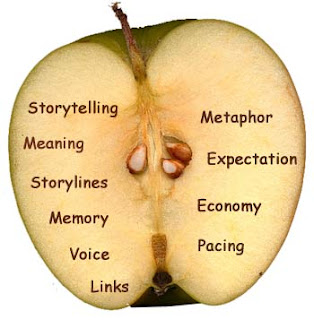 Presented by:
Presented by: Betty Roe, Tennessee Technological University, Cookeville, TN
Michael Roe, Mikro Enterprises, Crossville, TN
This session demonstrated tandem stories and discussed the differences in required preparation between telling tandem stories and telling individual stories. They described the language instructional benefits of using tandem stories and explained how they turned literature selections into tandem stories.
 I wanted to understand the tandem storyteller so I attended to find out more. I attempted to look up the word tandem, one of Wikipedia's definitions stated this: "Tandem" can be used more vaguely to refer to any group of persons or objects working together, not necessarily in line.[2] "In tandem", for example, in politics and business to describe joint plans and ventures. A tandem may also refer to Tandem language learning, a language learning method in which two partners of different mother tongues each help the other learn the foreign language.
I wanted to understand the tandem storyteller so I attended to find out more. I attempted to look up the word tandem, one of Wikipedia's definitions stated this: "Tandem" can be used more vaguely to refer to any group of persons or objects working together, not necessarily in line.[2] "In tandem", for example, in politics and business to describe joint plans and ventures. A tandem may also refer to Tandem language learning, a language learning method in which two partners of different mother tongues each help the other learn the foreign language.Mike and Betty opened with this particular style of storytelling and explained how this strategy helps with language skills.
The story they shared was the "Magic Pot". Together, side by side they began. They opened speaking in unison, then they separately spoke a line or two, then they return back to a unison speaking part. It looks easy, but as a storyteller I can tell you it is truly difficult.
Timing, timing, timing.
Props aren't used. Michael and Betty changed the story to better fit their style and to make it better as a tandem story. I learned real quick it is better to have short sentences.
Tips on Telling a Tandem Story
- Tell, don't recite word-for-word
- Except for unison parts
- Listen for cues from your partner
- Practice to get your timing and cues right
- Internalize the story, so a dropped line won't cause a problem.
- Narrator: Face audience- allows eye-contact
What are the benefits of tandem telling?
Language Skills Development
- Reading or listening to stories
- Analyzing-vocabulary, sequence, cause and effect, characterization, action, story structure
- Writing to combine versions or divide into parts
- Repeated reading to learn stories
Speaking Skills
- volume
- pitch
- enunciation
- pronunciation
- pacing register
- vocabulary
Listening Skills
- Audience- vocabulary and story structure
- Participants- cues for speaking
Reader's Theatre
- Interpretive oral reading experience
- dramatic
- script is right in front of you
- no sets, costumes or props needed
Benefits of Reader's Theatre
- many of the same benefits as tandem telling
- reading fluency
- reading vocabulary
- reading comprehension
- can be numerous readers
Benefits especially important for ELLs and struggling and reluctant readers
- expands vocabulary
- involves them in collaboration with peers
- boosts self esteem
- improves attitude
Materials for Reader's Theatre
- play scripts
- poems
- stories with dialogue
- selections from content area texts
- nonfiction trade books
- materials with few scenes and characters
Student Preparation
- teacher modeling
- discussion
- development of assessment rubric or questions
Script Preparation
- narrator and characters
- large print
- highlighting for emphasis
- purposeful focus on story elements
Sources: free scripts and stories
www.aaronshep.com/rt/index.html
Cast Parts
- consider reading levels
- allow group decisions in some cases
- consider rotating parts for repeated performances
- have teacher as narrator in lower level classes
Rehearsal Time
- move from group to group
- give suggestions
- ask pertinent questions
- offer encouragement
- students sit or stand before the performance
Betty D. Roe broe@tntech.edu
Michael H. Roe mikeroe.xvl@gmail.com

2 comments:
It sounds like this is something co-teachers could model and we could have children learn to do it. It would be a great activity to teach pacing and intonation!
This looks really interesting. Reading in unison is difficult for some kids but would really work on fluency - especially intonation. Might be very motivating for some children also. this would be a great end-of-the-year activity.
Post a Comment